 W
WCameroon is home to at least 250 languages. However, some accounts report around 600 languages. These include 55 Afro-Asiatic languages, two Nilo-Saharan languages, four Ubangian languages, and 169 Niger–Congo languages. This latter group comprises one Senegambian language (Fulfulde), 28 Adamawa languages, and 142 Benue–Congo languages . French and English are official languages, a heritage of Cameroon's colonial past as a colony of both France and the United Kingdom from 1916 to 1960. Eight out of the ten regions of Cameroon are primarily francophone, representing 83% of the country's population, and two are anglophone, representing 17%. The anglophone proportion of the country is in constant regression, having decreased from 21% in 1976 to 20% in 1987 and to 17% in 2005, and is estimated at 16% in 2015.
 W
WAnglophone Cameroonians are the people of various cultural backgrounds, most of who hail from the English-speaking regions of Cameroon. These regions were formerly known as British Southern Cameroons, being part of the League of Nations mandate and United Nations Trust Territories. An anglophone Cameroonian is widely regarded as anyone who has lived in the North West and South West regions of Cameroon, undertaken Anglosaxon education and practices the Anglo-Saxon system of education and law.
 W
WArabic is a Semitic language that first emerged in the 1st to 4th centuries CE. It is now the lingua franca of the Arab world. It is named after the Arabs, a term initially used to describe peoples living in the Arabian Peninsula bounded by eastern Egypt in the west, Mesopotamia in the east, and the Anti-Lebanon mountains and Northern Syria in the north, as perceived by ancient Greek geographers. The ISO assigns language codes to 32 varieties of Arabic, including its standard form, Modern Standard Arabic, also referred to as Literary Arabic, which is modernized Classical Arabic. This distinction exists primarily among Western linguists; Arabic speakers themselves generally do not distinguish between Modern Standard Arabic and Classical Arabic, but rather refer to both as al-ʿarabiyyatu l-fuṣḥā or simply al-fuṣḥā (اَلْفُصْحَىٰ). Modern Standard Arabic is an official language of 26 states and 1 disputed territory, the third most after English and French.
 W
WBamukumbit (Mangkong) is a Grassfields Bantu language spoken in Cameroon.
 W
WBamum, also spelled Bamun or in its French spelling Bamoun, is an Eastern Grassfields language of Cameroon, with approximately 420,000 speakers. The language is well known for its original script developed by King Njoya and his palace circle around 1895. Cameroonian musician Claude Ndam was a native speaker of the language and sang it in his music.
 W
WBata (Gbwata) is an Afro-Asiatic language spoken in Nigeria in Adamawa State in the Numan, Song, Fufore and Mubi LGAs, and in Cameroon in North Province along the border with Nigeria. Dialects are Demsa, Garoua, Jirai, Kobotachi, Malabu, Ndeewe, Ribaw, Wadi, and Zumu (Jimo). It is often considered the same language as Bacama.
 W
WThe Beboid languages are any of several groups of languages spoken principally in southwest Cameroon, although two languages are spoken over the border in Nigeria. They are probably not most closely related to each other. The Eastern Beboid languages may be most closely related to the Tivoid and Momo groups, though some of the geographical Western Beboid grouping may be closer to Ekoid and Bantu.
 W
WCameroon English is an English dialect spoken predominantly in Cameroon, mostly learned as a second language. It shares some similarities with English varieties in neighbouring West Africa, as Cameroon lies at the west of Central Africa. It is primarily spoken in the Northwest and Southwest regions of Cameroon.
 W
WCameroonian Pidgin English, or Cameroonian Creole, is a language variety of Cameroon. It is also known as Kamtok. It is primarily spoken in the North West and South West English speaking regions. Five varieties are currently recognised:Grafi Kamtok, the variety used in the grassfields and often referred to as 'Grafi Talk'. Liturgical Kamtok. This variety has been used by the Catholic Church for three-quarters of a century. Francophone Kamtok. This variety is now used mainly in towns such as Douala, Nkongsamba, Bafoussam and Yaoundé, and by francophones talking to anglophones who do not speak French. Limbe Kamtok. This variety is spoken mainly in the southwest coastal area around the port that used to be called Victoria and is now Limbe. Bororo Kamtok. This variety is spoken by the Bororo cattle traders, many of whom travel through Nigeria and Cameroon.
 W
WChadian Arabic is one of the regional colloquial varieties of Arabic and is the first language of some 1.6 million people, both town dwellers and nomadic cattle herders. Although Chad borders 2 Arab countries in the north and eastern parts of the country, the majority of its speakers live in southern Chad. Its range is an east-to-west oval in the Sahel, about 1,400 miles (2,300 km) long by 300 miles (480 km) north-to-south. Nearly all of this territory is within Chad or Sudan. It is also spoken elsewhere in the vicinity of Lake Chad in the countries of Cameroon, Nigeria, Niger. Finally, it is spoken in slivers of the Central African Republic and South Sudan. In addition, this language serves as a lingua franca in much of the region. In most of its range, it is one of several local languages and often not among the major ones.
 W
WThe Ekoid languages are a dialect cluster of Southern Bantoid languages spoken principally in southeastern Nigeria and in adjacent regions of Cameroon. They have long been associated with the Bantu languages, without their status being precisely defined. Crabb (1969) remains the major monograph on these languages, although regrettably, Part II, which was to contain grammatical analyses, was never published. Crabb also reviews the literature on Ekoid up to the date of publication.
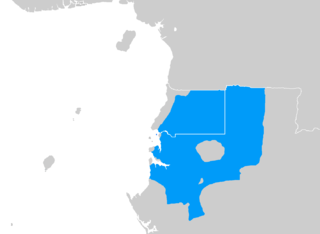 W
WFang is a Central African language spoken by around 1 million people, most of them in Equatorial Guinea, and northern Gabon, where it is the dominant Bantu language; Fang is also spoken in southern Cameroon, the Republic of the Congo, and small fractions of the islands of São Tomé and Príncipe. It is related to the Bulu and Ewondo languages of southern Cameroon.
 W
WFrench is a Romance language of the Indo-European family. It descended from the Vulgar Latin of the Roman Empire, as did all Romance languages. French evolved from Gallo-Romance, the Latin spoken in Gaul, and more specifically in Northern Gaul. Its closest relatives are the other langues d'oïl—languages historically spoken in northern France and in southern Belgium, which French (Francien) largely supplanted. French was also influenced by native Celtic languages of Northern Roman Gaul like Gallia Belgica and by the (Germanic) Frankish language of the post-Roman Frankish invaders. Today, owing to France's past overseas expansion, there are numerous French-based creole languages, most notably Haitian Creole. A French-speaking person or nation may be referred to as Francophone in both English and French.
 W
WFula, also known as Fulani or Fulah, is a Senegambian language spoken by more than 65 million people as a set of various dialects in a continuum that stretches across some 20 countries in West and Central Africa. Along with other related languages such as Serer and Wolof, it belongs to the Senegambian branch within the Niger–Congo family, which does not have tones, unlike most other Niger–Congo languages. More broadly, it belongs to the Atlantic geographic grouping within Niger–Congo. It is spoken as a first language by the Fula people from the Senegambia region and Guinea to Cameroon, Nigeria, and Sudan and by related groups such as the Toucouleur people in the Senegal River Valley. It is also spoken as a second language by various peoples in the region, such as the Kirdi of northern Cameroon and northeastern Nigeria.
 W
WGhɔmálá’, or Bamileke-Banjun (Bamiléké-Bandjoun), is a major Bamileke language of Cameroon.
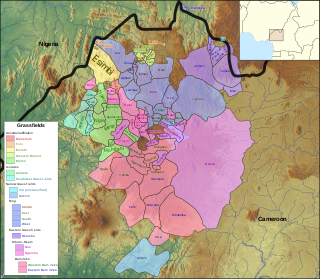 W
WThe Grassfields languages are a branch of Southern Bantoid spoken in the Western High Plateau of Cameroon and some parts of Taraba state, Nigeria. Better known Grassfields languages include the Eastern Grassfields languages Bamun, Yamba and the Ring language Kom. The languages are closely related, sharing approximately half of their vocabulary.
 W
WHausa is a Chadic language spoken by the Hausa people, mainly within the northern half of Nigeria and the southern half of Niger, and with significant minorities in Chad, Benin, and Cameroon.
 W
WKanuri is a dialect continuum spoken by some four million people, as of 1987, in Nigeria, Niger, Chad and Cameroon, as well as small minorities in southern Libya and by a diaspora in Sudan.
 W
WThe Kwasio language, also known as Ngumba / Mvumbo, Bujeba, and Gyele / Kola, is a language of Cameroon, spoken in the south along the coast and at the border with Equatorial Guinea by some 70,000 members of the Ngumba, Kwasio, Gyele and Mabi peoples. Many authors view Kwasio and the Gyele/Kola language as distinct. In the Ethnologue, the languages therefore receive different codes: Kwasio has the ISO 639-3 code nmg, while Gyele has the code gyi. The Kwasio, Ngumba, and Mabi are village farmers; the Gyele are nomadic Pygmy hunter-gatherers living in the rain forest.
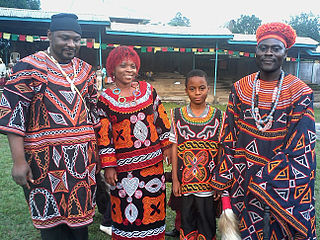 W
WMankon is a Grassfields language spoken in Cameroon. It is closely related to Mundum and Mendankwe-Nkwen. Along with Mundum, it is called Ngemba. There are several distinct dialects: Mankunge (Ngemba), Nsongwa, Shomba, Mbutu (Bambutu), Njong (Banjong), Bagangu (Akum) and Alatening.
 W
WMendankwe and Nkwen are distinct dialects of a Grassfields Bantu language spoken in Cameroon.
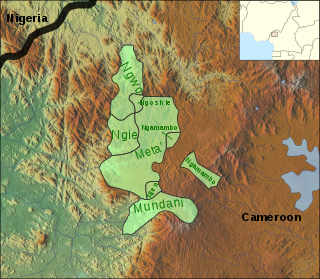 W
WThe Momo languages are a group of Grassfields languages spoken in the Western High Plateau of Cameroon.
 W
WMundum (Bamundum) is a Grassfields Bantu language spoken in Cameroon. It is closely related to Mankon and Mendankwe-Nkwen; along with Mankon, it is called Ngemba. There are two dialects, Anyang and Mberewi.
 W
WThe Ngemba languages are a group of Eastern Grassfields languages of the Western High Plateau of Cameroon.
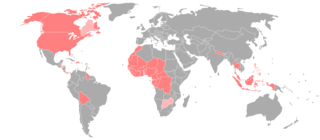 W
WAmerican Sign Language (ASL) developed in the United States and Canada, but has spread around the world. Local varieties have developed in many countries, but there is little research on which should be considered dialects of ASL and which have diverged to the point of being distinct languages.